
“It’s Brutal”: Man Who Tested Positive For COVID-19 Shares The Innocent First Symptoms He Experienced
Michael Bane, the 42-year-old Vice President of Client Engagement at Deighan Law, LLC, was healthy. He could do 13 pullups and run a sub-seven mile. One time, Mike even ran 6 miles of a marathon with a partially torn tendon in his foot. Mike’s also the type of guy who walks around on a fractured ankle for two weeks before bothering his doctor about it. The tough guy was in shape. But the coronavirus brought him to his knees regardless of it.
At first, Michael tried to carry on with his work and family life, but after a long and gruesome fight, COVID-19 finally has him in the hospital. To raise awareness, he shared a detailed story about the living hell he went through, and it vividly shows just how brutal the virus really is.
More info: Facebook
Image credits: Michael Bane
Image credits: Michael Bane
The United States just went through its deadliest day since the outbreak of the coronavirus, with 100 new deaths reported on Monday. Currently, one in three Americans have been ordered to stay home as health officials issue warnings about what the next days of the coronavirus pandemic will look like.
“It’s just going to get worse this week and worse next week,” Dr. Leana Wen, a visiting professor at George Washington University, told CNN. “How bad it gets depends on the actions that we each can take today.”
Meanwhile, the World Health Organization thinks the US could become the new centre of the global coronavirus pandemic. “We are now seeing a very large acceleration in cases in the US. So it does have that potential [to become the centre of the pandemic],” WHO spokeswoman Margaret Harris said.
So far, 46,481 people in the US have become infected with the virus and there have been 593 deaths, according to the latest data from John Hopkins University.
According to the Centers for Disease Control and Prevention (CDC), people should watch out for fever, cough, and shortness of breath which may appear 2-14 days after exposure to the coronavirus. The CDC also notes that if someone experiences emergency warning signs (including bluish lips or face, new confusion or inability to arouse, and persistent pain or pressure in the chest as well as difficulty breathing or shortness of breath), they should get immediate medical attention.
Those at a higher risk of serious illness from COVID-19 (people who have heart and/or disease, diabetes, and older adults) should contact their healthcare provider early, even if their illness is mild.
People are relating to Michael’s story in all sorts of ways
I cannot understand why he would even consider taking his child to daycare!!! WTH?
Yep. I don't understand how people do not understand "IF YOU ARE SYMPTOMATIC, YOU AND YOUR FAMILY NEED TO STAY HOME."
Load More Replies...To be fair, I think that sometimes people tend to brush it off not completely understanding the weight of illness. I think that's one thing to take from his story. However, you definitely have a point too. I mean it's crazy to think people are tough enough to run six miles of a marathon with a torn tendon, but it also goes to show how stubborn he is. A lot of people on here are saying it wouldn't have been this bad if he simply would have rested and taken care of himself more.
Load More Replies...This is rather an explanation of a failing healthcare system than a proof that healthy people can suffer from COVID. That they can should be understood by everybody by now, although it seems that fatalities are almost exclusively tied to prior ailments. The risk is that one is not necessarily aware of those.
YES. My thought exaclty. 1st: 49$ for an online appointment to get instructions? 2nd: driving to the hospital to get tested???
Load More Replies...I cannot understand why he would even consider taking his child to daycare!!! WTH?
Yep. I don't understand how people do not understand "IF YOU ARE SYMPTOMATIC, YOU AND YOUR FAMILY NEED TO STAY HOME."
Load More Replies...To be fair, I think that sometimes people tend to brush it off not completely understanding the weight of illness. I think that's one thing to take from his story. However, you definitely have a point too. I mean it's crazy to think people are tough enough to run six miles of a marathon with a torn tendon, but it also goes to show how stubborn he is. A lot of people on here are saying it wouldn't have been this bad if he simply would have rested and taken care of himself more.
Load More Replies...This is rather an explanation of a failing healthcare system than a proof that healthy people can suffer from COVID. That they can should be understood by everybody by now, although it seems that fatalities are almost exclusively tied to prior ailments. The risk is that one is not necessarily aware of those.
YES. My thought exaclty. 1st: 49$ for an online appointment to get instructions? 2nd: driving to the hospital to get tested???
Load More Replies...
 Dark Mode
Dark Mode 

 No fees, cancel anytime
No fees, cancel anytime 






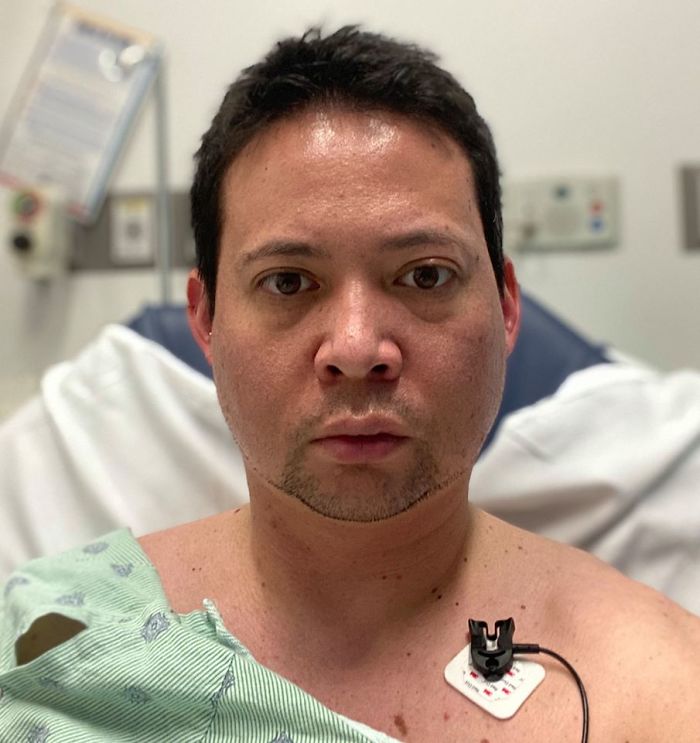
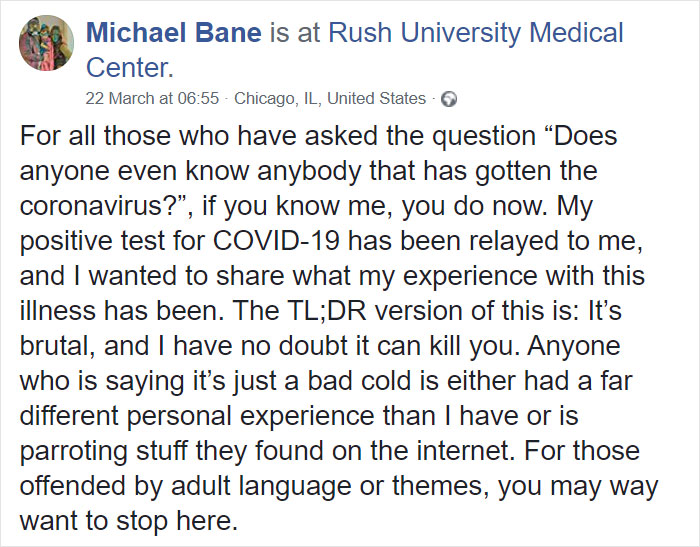
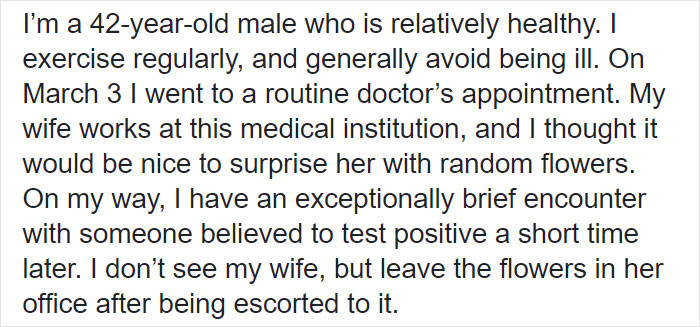
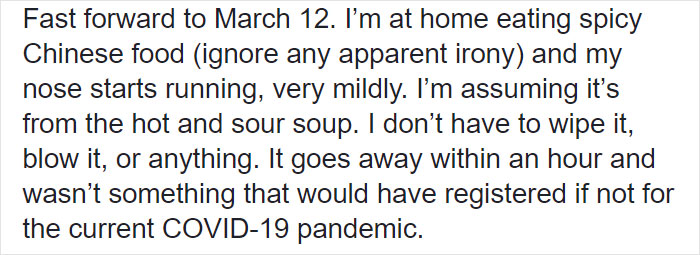

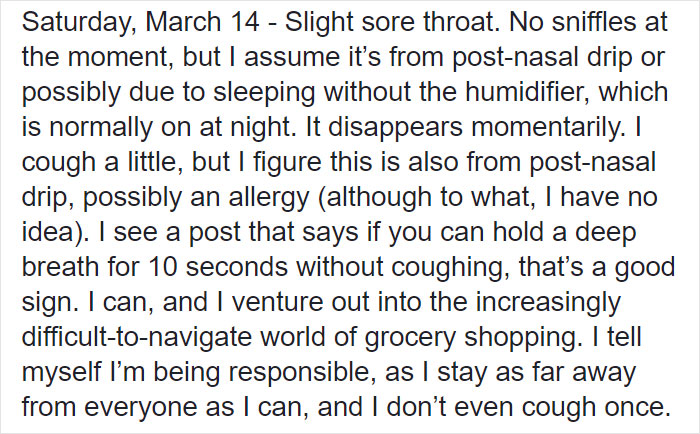
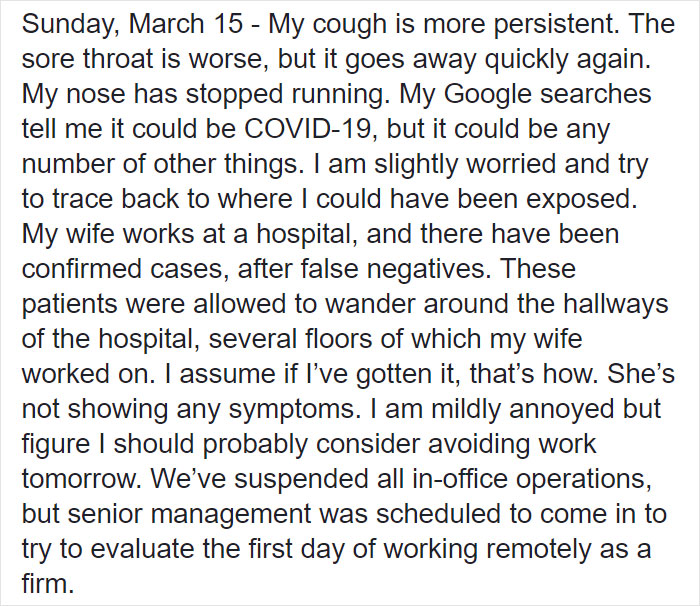
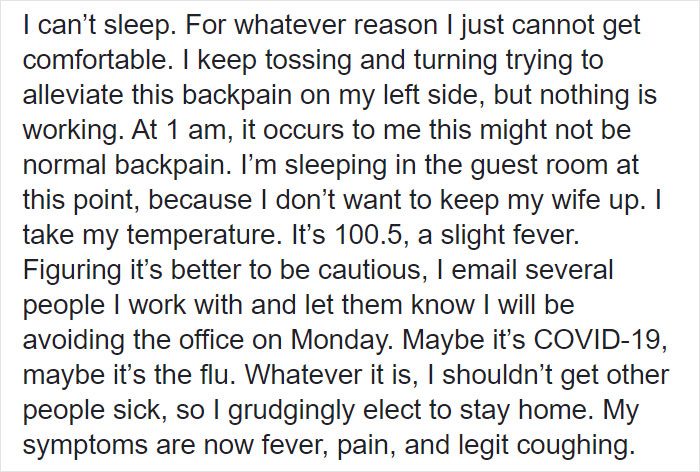
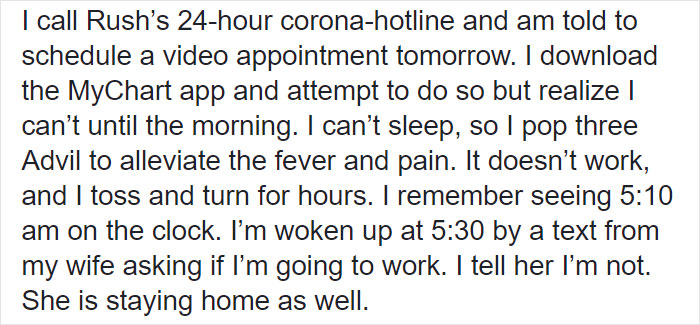
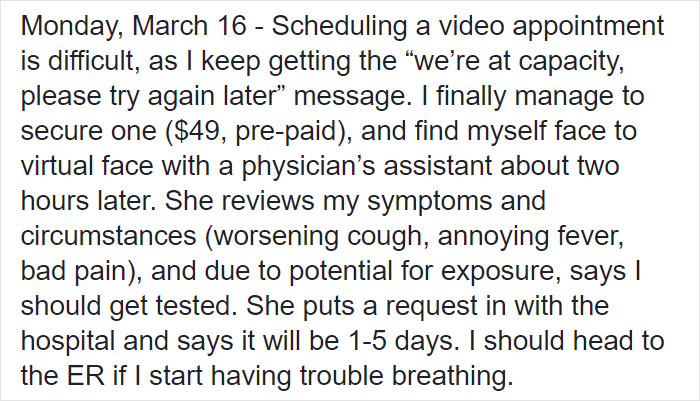
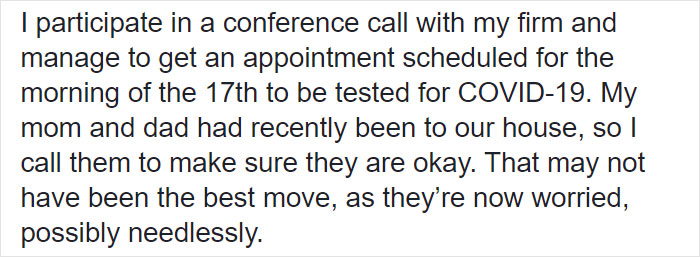
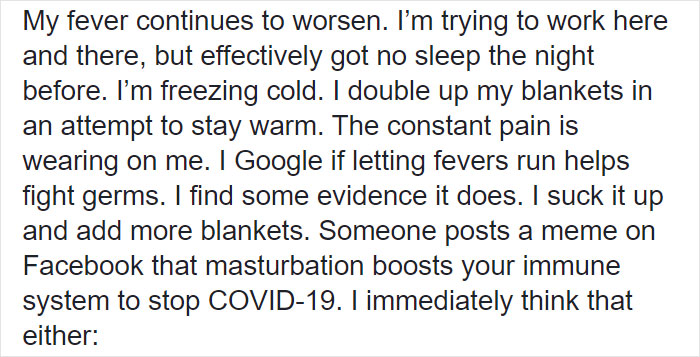
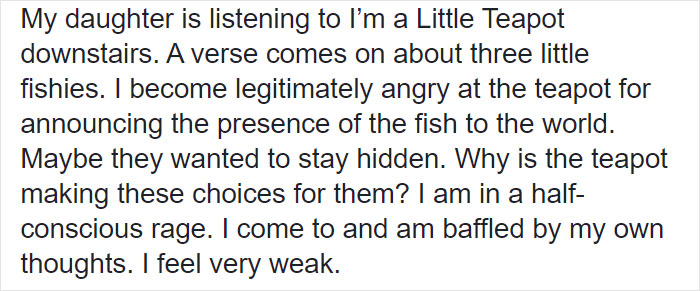
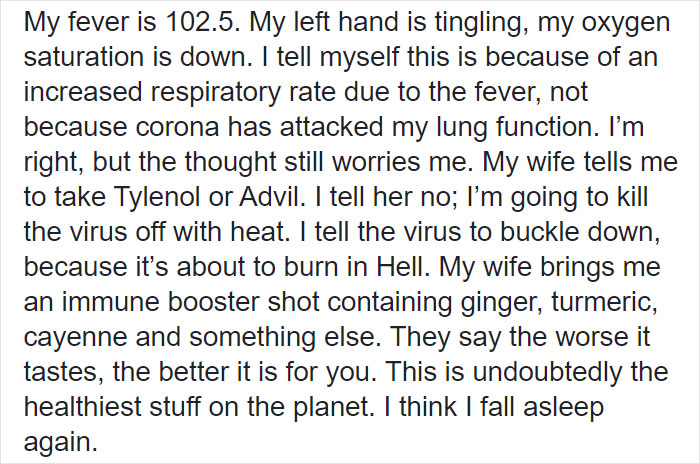
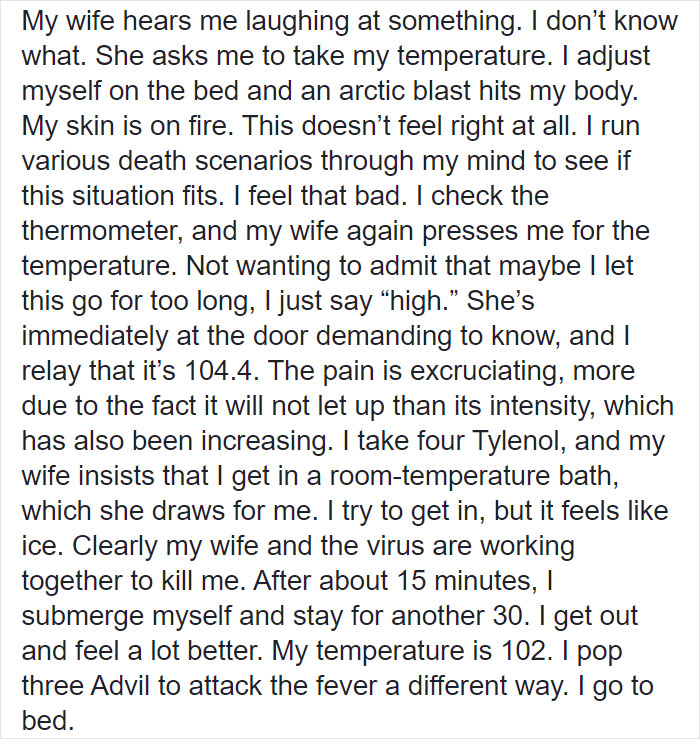
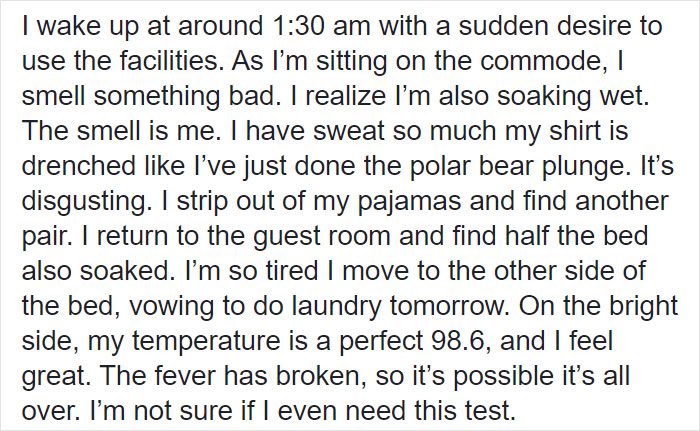
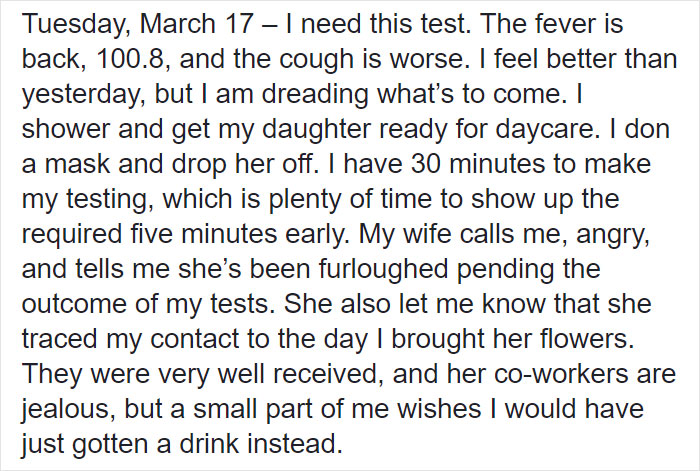
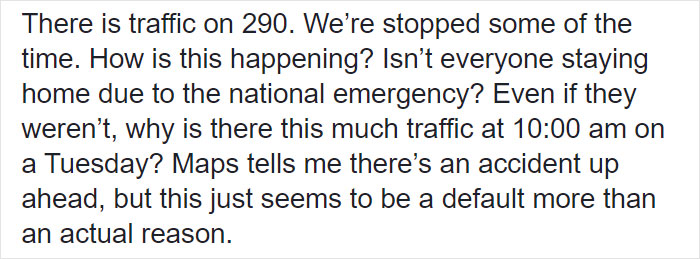
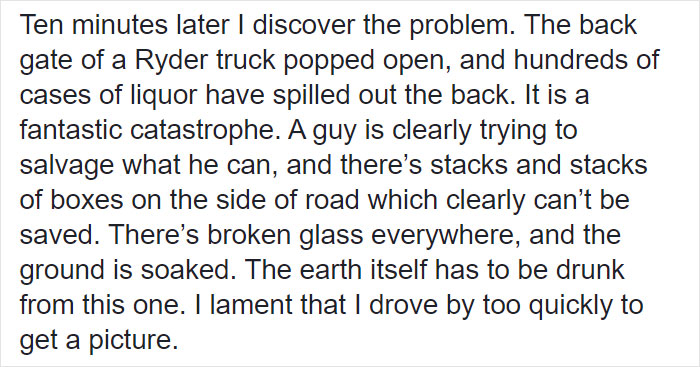
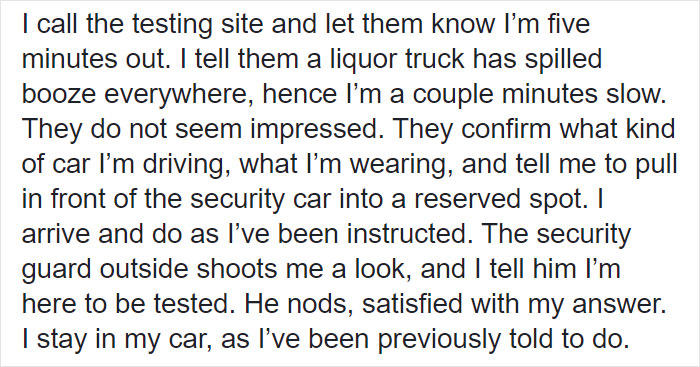
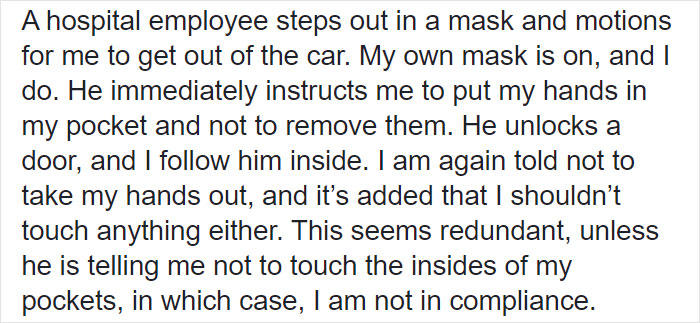
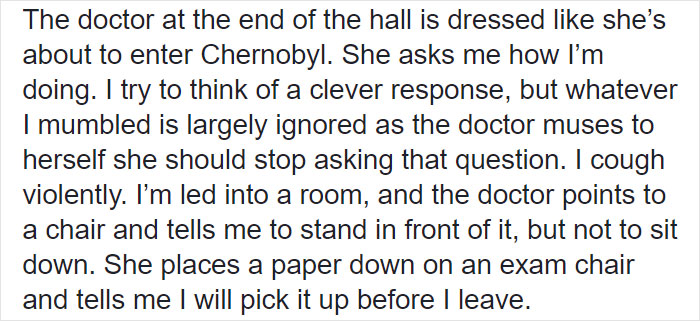
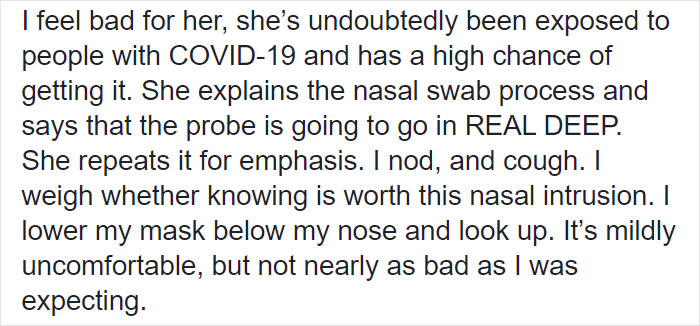
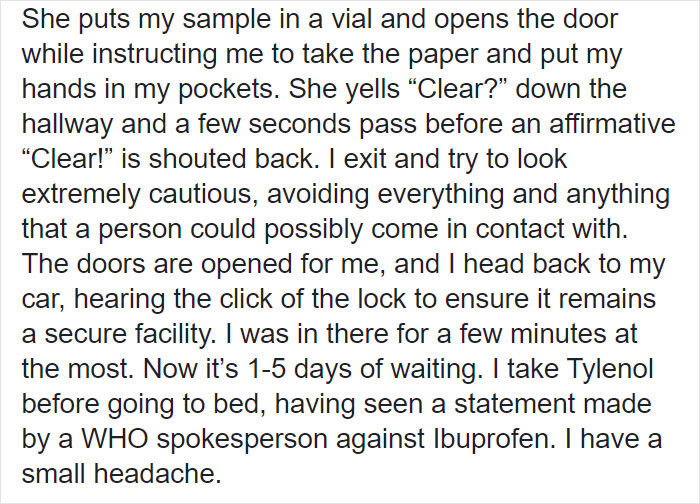
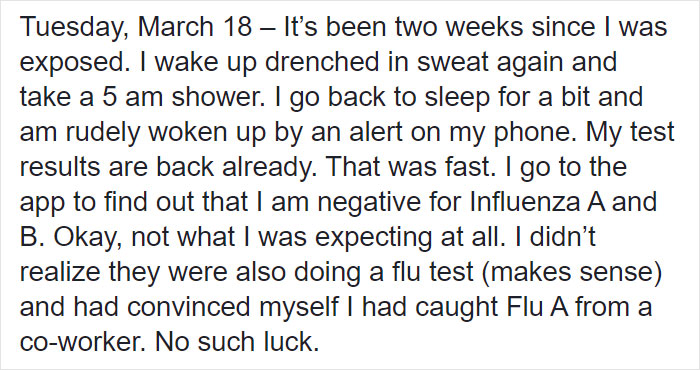
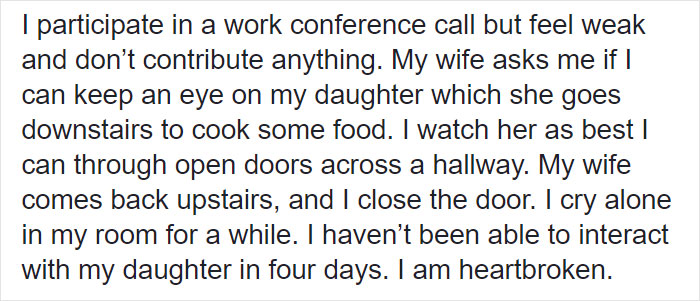
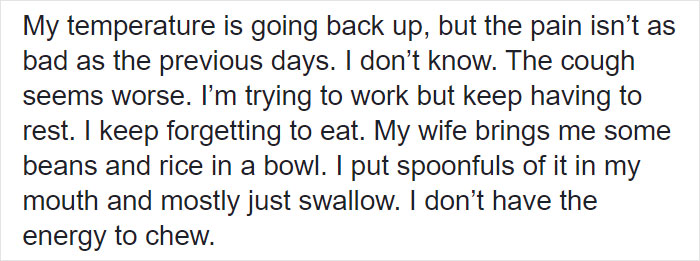
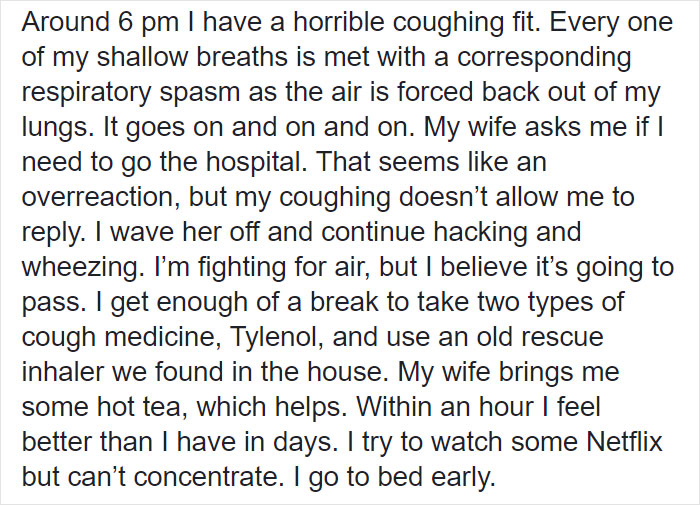
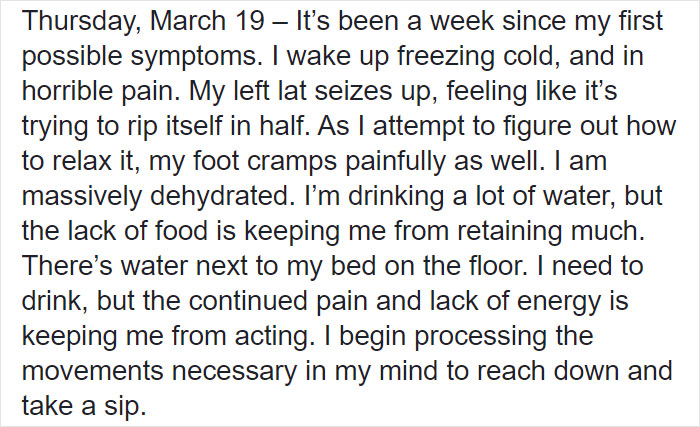
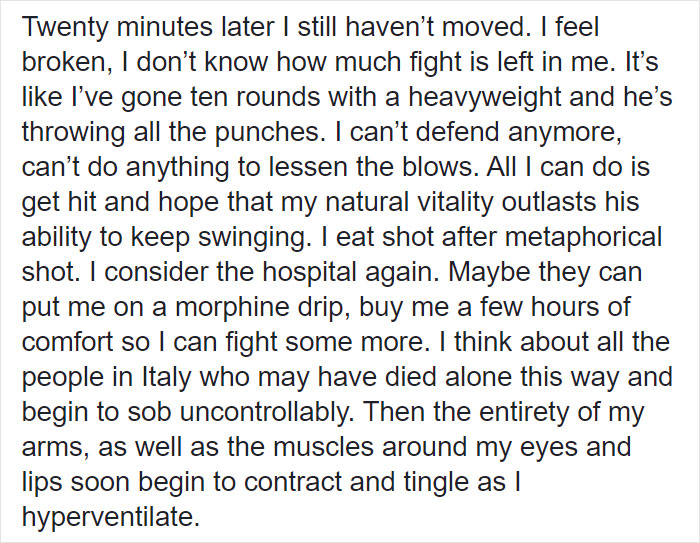
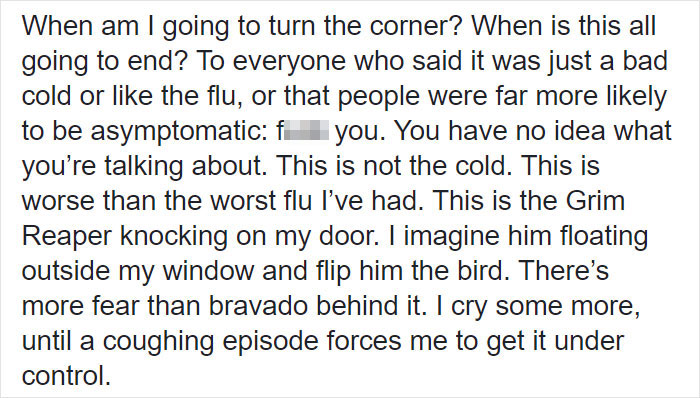
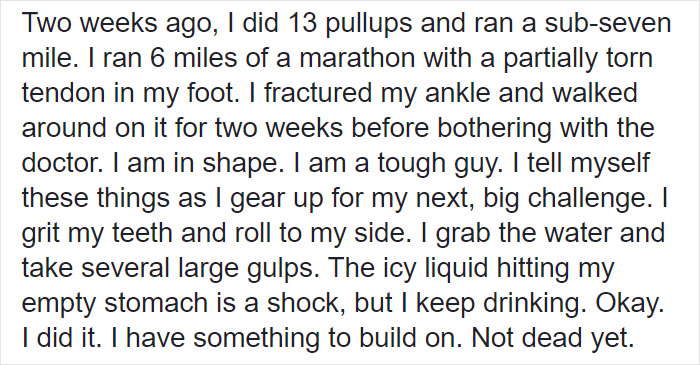
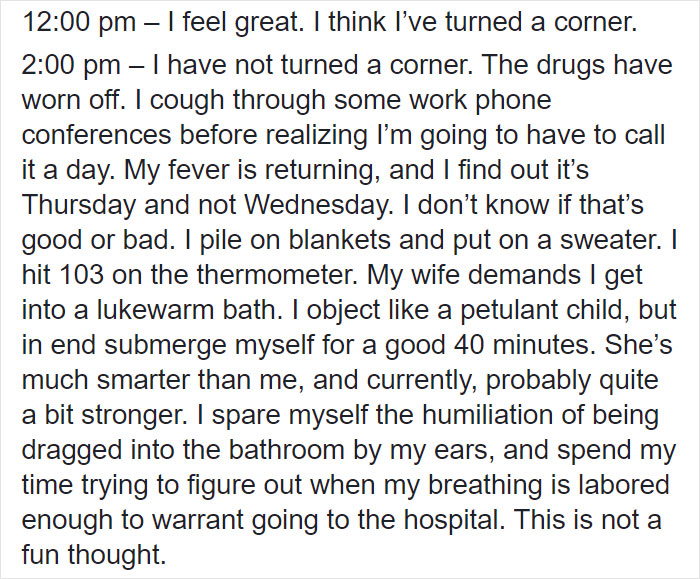
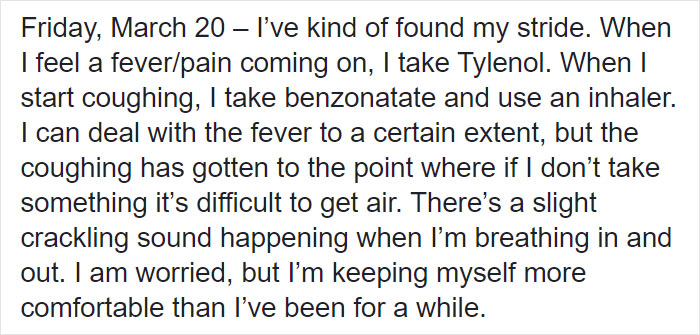
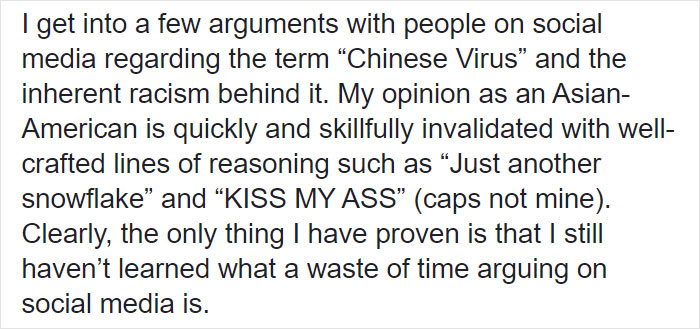
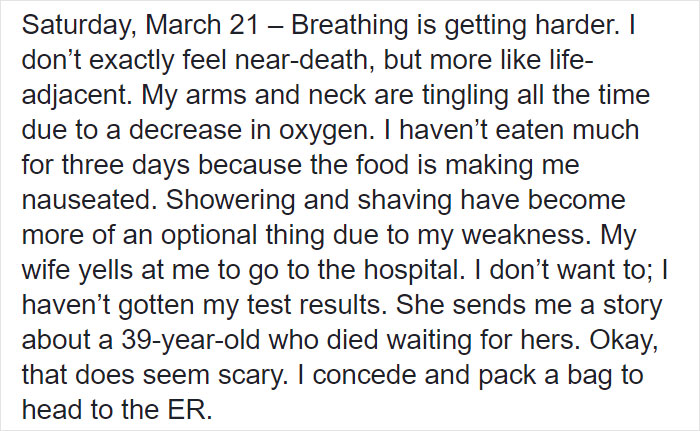
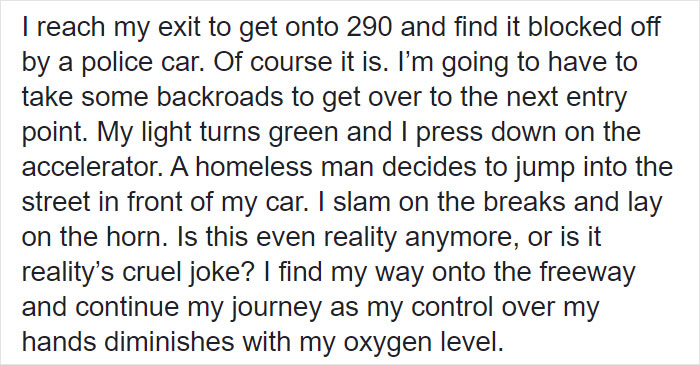
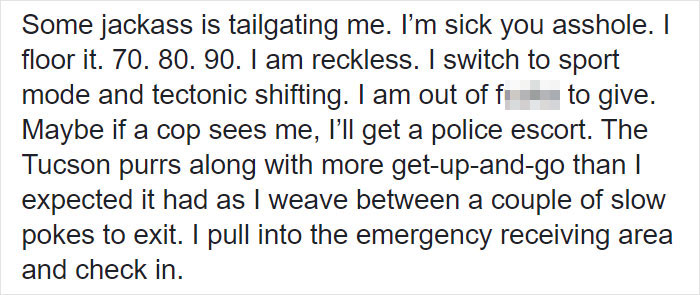
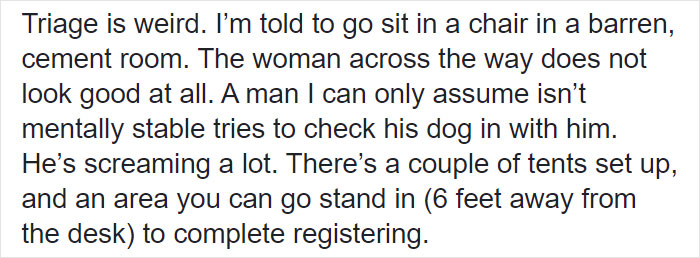
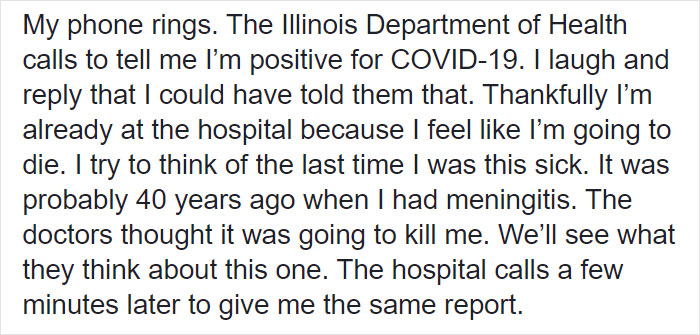
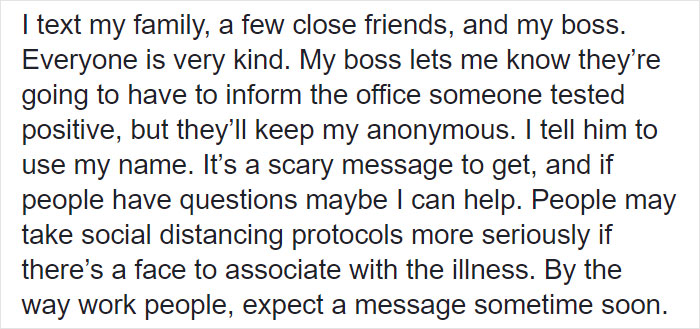
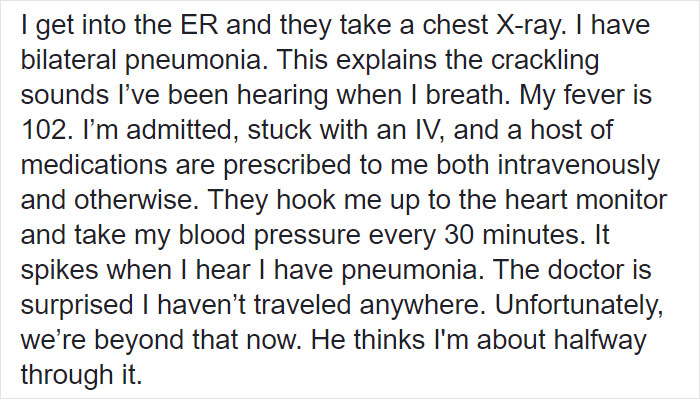

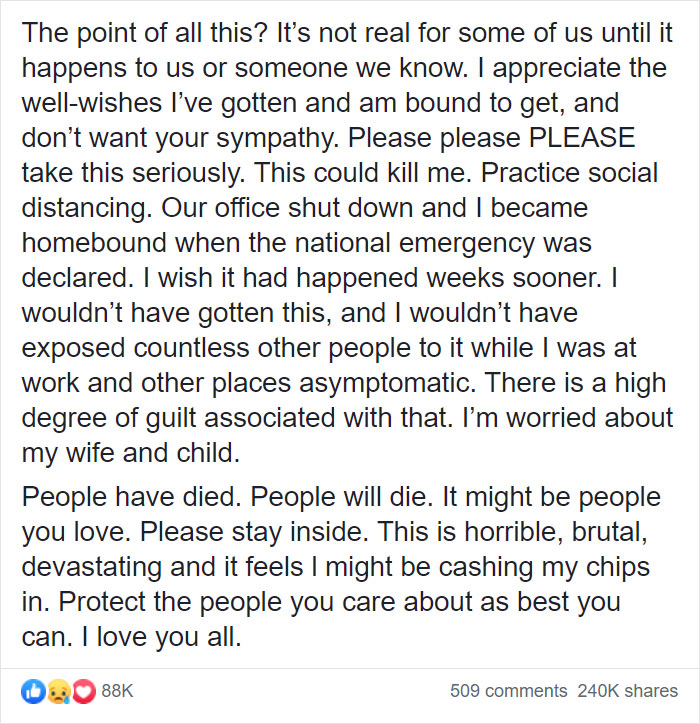


















































204
71